Nosta Restaurant
All about couscous
Published on:
September 23, 2021
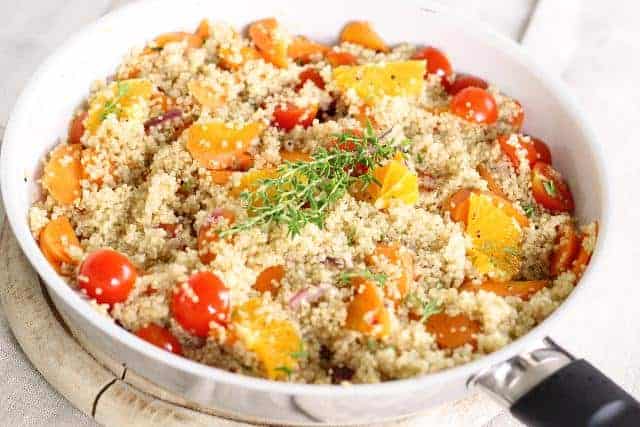
The pantry stable from North Africa
Couscous, the iconic food of North Africa, is becoming more popular by the day. Millions of people in Europe, the Middle East, West Africa and the Mediterranean love this dish because it is easy to prepare.
You can prepare it in just five minutes.
Couscous is not only easy to prepare, but it is also affordable and nutritious. It is a powerhouse of antioxidants, plant-based protein, carbohydrates, fibre, calcium, selenium, B vitamins, zinc and iron.
Yet many people, especially outside North Africa, do not know what couscous is.
They think it is a rare grain grown somewhere in Morocco, Libya, Mauritania or Algeria.
Little do they know that couscous is a pasta product.
This post sheds more light on this symbol of harmony for the countries of North Africa.
How did it get its name?
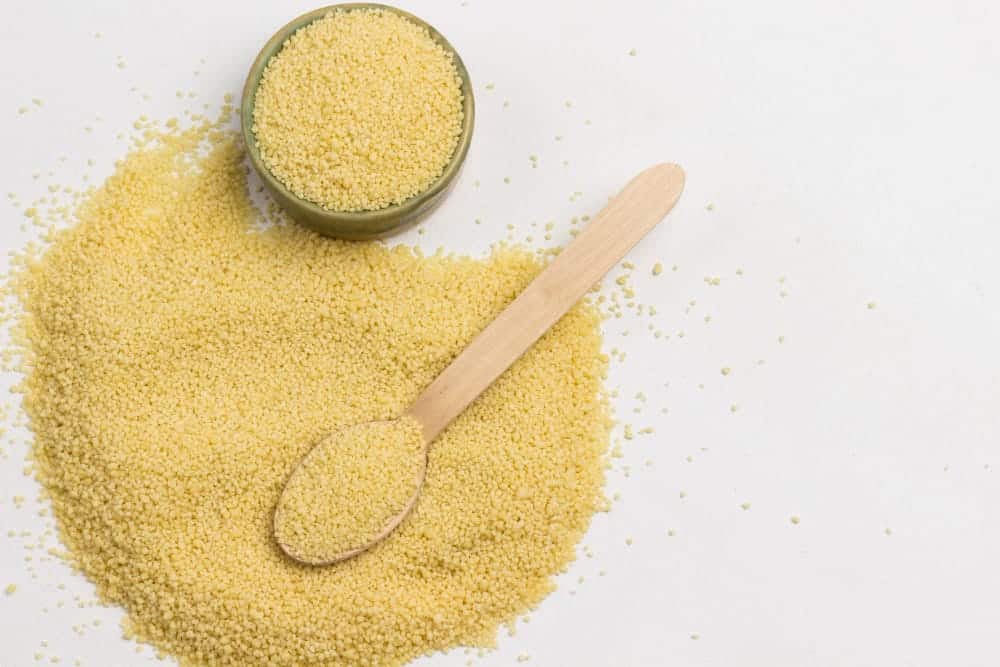
The name
couscous was derived from K'seKsu, a word taken from the Arabic kaskasa, meaning to pound.
North Africans may have settled on the name because couscous was made from pounded durum wheat.
The history of couscous
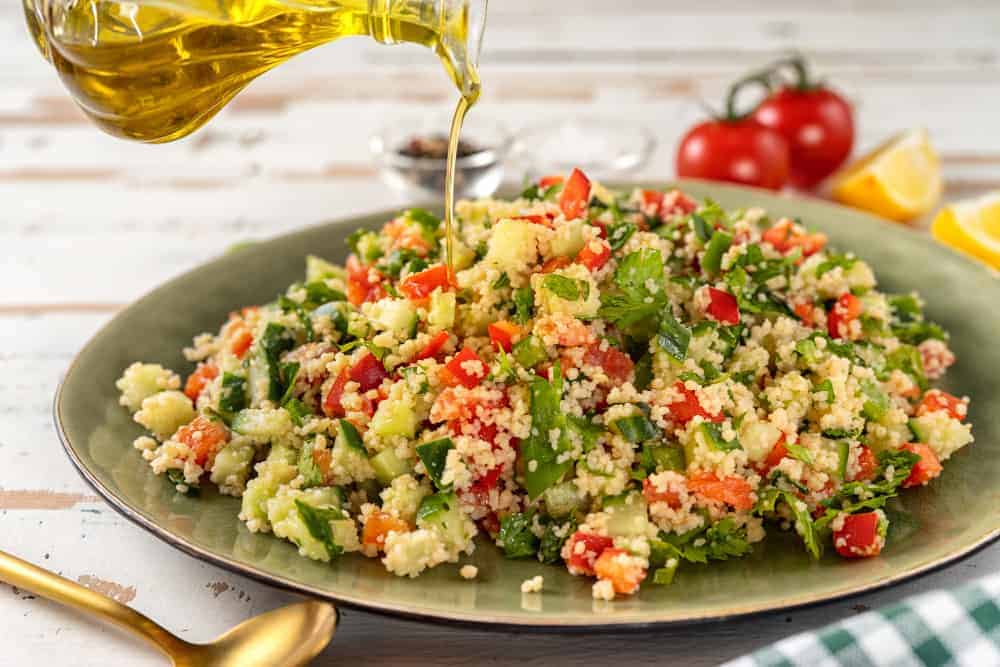
Some archaeological evidence suggests that this North African icon food dates back to the time of the reign of King Masinissa (3rd century BC).
Scholars claimed this after discovering traces of cooking vessels that looked like couscoussiers; the traditional pressure cookers used by North Africans to cook this staple food.
However, many food historians contradict the archaeological findings in the ancient kingdom of Numidia, now Algeria. They claim that durum wheat, the main ingredient in couscous, did not appear until around 7000 BC.
So it is impossible that the ancient Algerians could have made the authentic couscous we know today without wheat.
Other alternative grains such as barley and rye were cultivated around the same time that wheat was discovered.
The clearest evidence shows that couscous originated between the 11th and 13th centuries. Food historians have found written evidence in two Arabic cookbooks - Fadalt al Jiwan and Kitab al Tabij. Both cookbooks contain recipes very similar to modern couscous.
In this period, North Africans crushed wheat, mixed it with water and formed round couscous balls with their hands.
They steamed the
traditional couscous in couscoussiers to prepare a meal.
Immigration brought couscous to other parts of the world.
Couscous preparation and variations
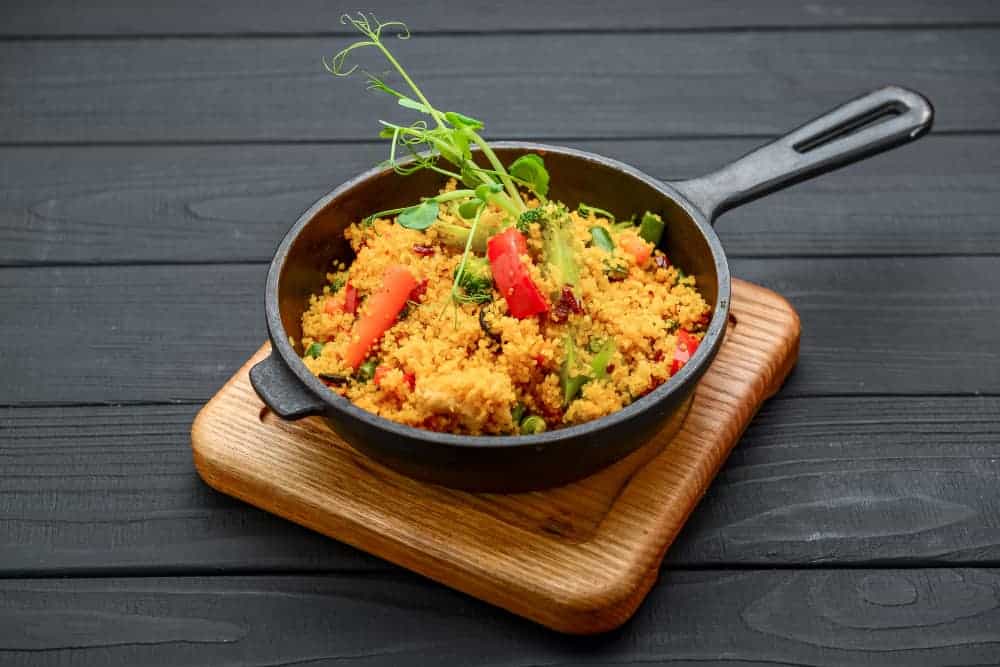
Long before the world became industrialised, North Africans made couscous by hand. They used a millstone to grind the durum wheat.
Then they isolated the hard part (semolina) of the ground wheat, mixed it with water and formed small couscous balls with their hands.
The couscous pioneers dried the balls in the sun and stored them for later use.
Today, couscous is produced commercially in large quantities. It is made from semolina flour, mixed with water, and then rolled in a rotary drum to form granules. The grainy granules are steamed, cooled and then packaged.
Couscous is readily available in leading supermarket chains. So you do not have to prepare your own couscous.
How is couscous cooked?
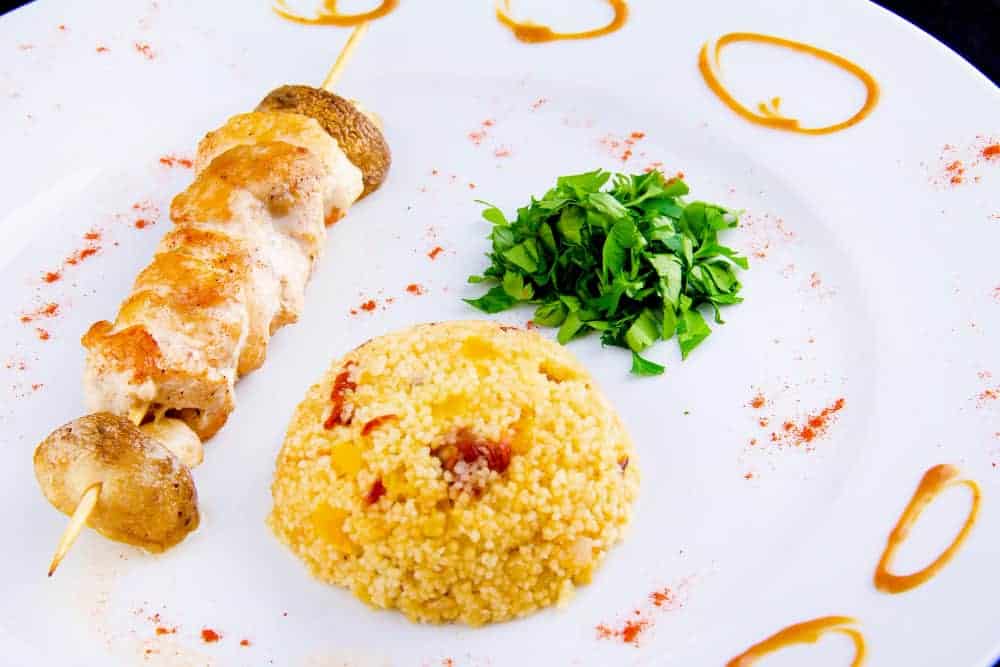
Just like pasta, preparing couscous for
lunch is quite simple. All you need is to cook the right amount of couscous in the right amount of water. Otherwise, this grain-like pasta will undercook or overcook. It will leave you disappointed.
The couscous experts in North Africa recommend using 1 ¼ cups of water for one cup of couscous.
Bring the water to a boil, add ½ tablespoon of salt and 1 tablespoon of butter or any vegetable oil. Pour your couscous granules into the boiling water and simmer for five minutes.
When it's ready, serve it with a combination of steamed vegetables that will please your taste buds. You can also serve couscous with beef, chicken and fish stews. It goes well with almost anything you would serve with rice.
Common variations of couscous
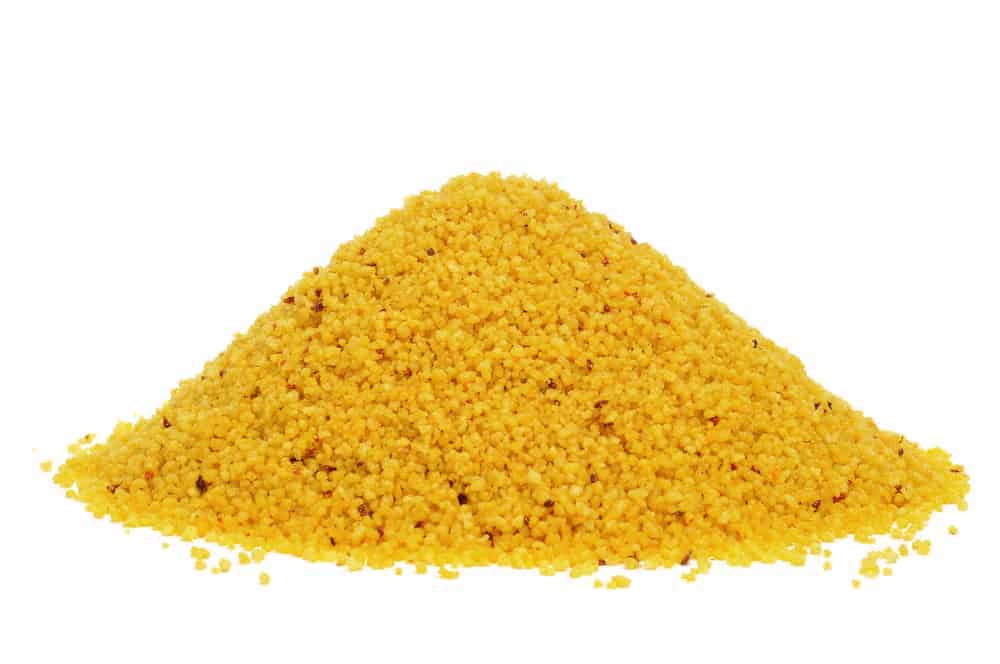
Couscous comes in several varieties. Some have small grains that cook immediately, while others have large grains that take quite a long time to cook.
On the other hand, some varieties of couscous are pre-cooked and others that are not.
Also, couscous differs depending on how it is prepared for dinner dining. In some regions, couscous is considered an ingredient for preparing desserts, while in others, this grain-like pasta is a simple side dish for stews.
Some of the most notable variations you can find here are:
Instant couscous
Instant couscous is an improved version of traditional couscous. This variation comes pre-cooked, dried and packaged. You only need to cook it for 5 minutes to prepare your meal. No time wasted. Instant couscous is available in most supermarkets and online stores. This is also the variety that restaurants in Cork City use to prepare the couscous delicacies on their menu.
Local variations of couscous
Couscous from Algeria and Morocco
Algerian and Moroccan couscous have one thing in common. They have the finest grains. Small-grained couscous cooks quickly, one reason why it's a favourite among foodies around the world.
Algerians and Moroccans steam and sprinkle their couscous with sugar and almonds for a sweet dessert served with milk or orange blossom water. Others cook and season it with saffron for an after-dinner snack.
Mauritanian couscous
Mauritanian couscous is made from coarsely ground wheat grains. It is a type of healthy couscous. A great option for foodies who love simple dishes. Mauritanian cooks often use it as a base for lamb, camel or beef stew.
Tunisian couscous
The Tunisian version of couscous differs in the way it is prepared. The iconic dish is steamed and seasoned with harissa paste, a sauce made from garlic, vinegar and red chillies. The spicy couscous is served with fish, lamb, seafood or camel stew.
Libyan couscous
Libyans prepare their couscous as a dessert, known locally as Maghrood. They prepare it with honey, sesame seeds and dates. Also, other Libyans steam these noodles and serve them with beef, lamb and camel stews.
Egyptian couscous
In Egypt, couscous is an ingredient for desserts. Egyptians mix it with fruit juice, ground almonds, sweet butter, pomegranate seeds and ground pistachios to make a dessert that tastes like oatmeal.
Palestinian Couscous
Couscous from Palestine is characterised by larger pearls than those of the North African variety. And while regular couscous is made from durum wheat, the Palestinian variety is made from bulgur. Palestinians serve their couscous with chickpea or chicken broth.
French couscous
French couscous is made from semolina and sometimes other grains like rice and millet. They mix the couscous with spinach to make a complete dish. The French style of couscous is very similar to the Nigerien style.
West African couscous
The West African couscous, known locally as Wusu-Wusu, is prepared in Togo, Senegal, Mali, Togo, Nigeria, Benin and Ghana. This variety is made from fonio, a rare grain from the millet family.
A New Trend in Food: Couscous
Couscous is not just a popular dish for North Africans. But it is increasingly becoming a popular dish for foodies in Europe, West Africa, the North Mediterranean, Middle East and other countries worldwide.
People love it simply because it is nutritious and easy to prepare. It is a real powerhouse of carbohydrates, protein, fibre, B vitamins and minerals. Like pasta, couscous is cooked within 5 minutes.
Frequently asked questions
What exactly is couscous?
Some people think that couscous is a grain grown somewhere in the Maghreb countries. But it is not. Couscous is a grain-like pasta made from semolina flour mixed with water and formed into small granular grains.
What is couscous made from?
Couscous is made from the semolina of durum wheat.
Is couscous healthier than rice?
This grain-like pasta is high in vegetable protein, B vitamins, selenium, zinc, magnesium, potassium and iron. It's just as healthy as brown rice and maybe even better than white rice. However, couscous contains gluten, an allergen for people with celiac disease. Rice does not contain gluten.
History is not clear on the exact pioneer of this pasta. However, it is widely believed that the Berbers are the inventors of couscous. Historical documents show that the ancient Berbers crushed wheat, mixed it with water and rolled it into couscous with their hands.
Is couscous healthier than potatoes?
Ideally, both couscous and potatoes are healthy. Couscous is rich in carbohydrates, vegetable protein, B vitamins and minerals. On the other hand, potatoes are a good source of carbohydrates, proteins, vitamins and minerals like sodium and magnesium. None is superior to the other.
What can you eat with couscous?
Couscous can be eaten with a variety of side dishes. You can eat it along with sautéed vegetables, meat stew, fish stew, spicy chickpea stew, and anything else you would eat with rice. Couscous is simply an alternative to rice. It is a side dish that is compatible with many steamed dishes.
Is couscous OK suitable for dogs?
Dogs can eat couscous as long as they are not sensitive to wheat or gluten. When eaten in moderation, this North African stable food provides you with selenium, protein, vitamins, zinc, and magnesium.
Which country has the best couscous?
Any couscous is delicious, as long as it's cooked well and served with a hearty side dish. But Moroccan couscous tops the list. Its small grains cook quickly and absorb the flavours of the spices very well.





